How fast is supersonic flight, and why does it create sonic booms?
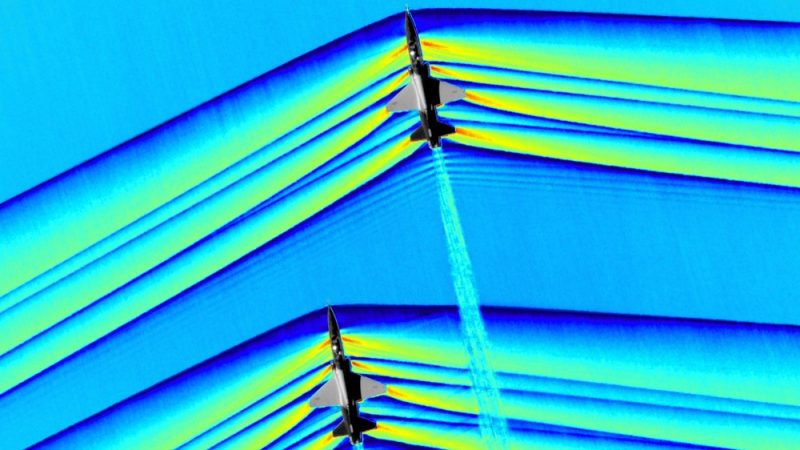
To fly at supersonic speeds is to punch through an invisible threshold in the sky. Rocketing through the air at a rate faster than sound waves can travel through it means surpassing a specific airspeed, but that exact airspeed varies. On Mars, the speed of sound is different from the speed of sound on Earth. And on Earth, the speed of sound varies depending on the temperature of the air an aircraft is traveling through.
Breaking the so-called sound barrier in 1947 made Chuck Yeager famous. But today, if a person in a military jet flies faster than the speed of sound, it’s not a significant or even noticeable moment, at least from the perspective of the occupants of the aircraft. “Man, in the airplane you feel nothing,” says Jessica Peterson, a flight test engineer for the US Air Force’s Test Pilot School at Edwards Air Force Base in California. People on the ground may beg to differ, depending on how close they are to the plane.
Here’s what to know about the speed of supersonic flight, a type of travel that’s been inaccessible to civilians who want to experience it in an aircraft ever since the Concorde stopped flying in 2003.
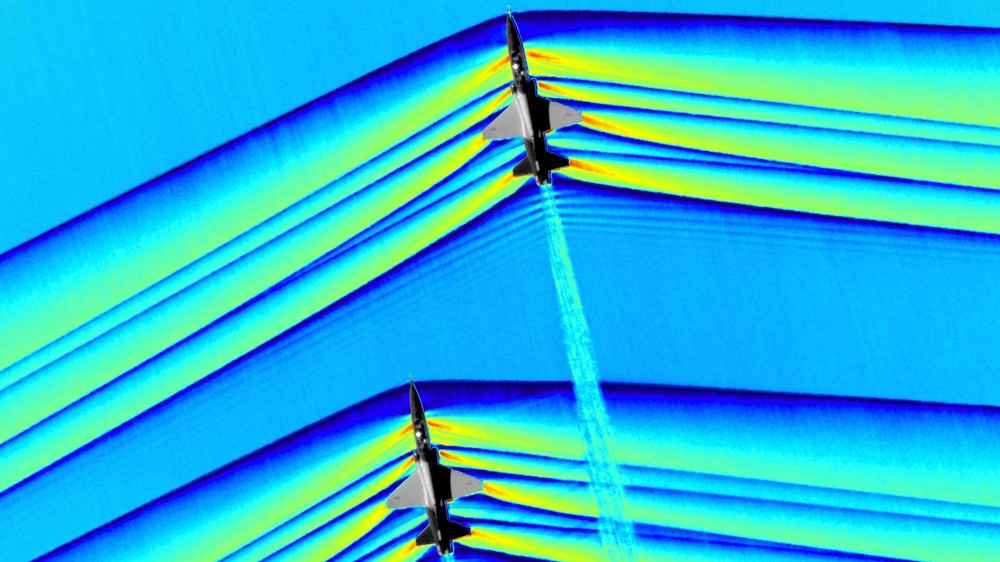
Ripples in the water, shockwaves in the air
Traveling at supersonic speed involves cruising “faster than the sound waves can move out of the way,” says Edward Haering, an aerospace engineer at NASA’s Armstrong Flight Research Center who has been researching sonic booms since the 1990s.
One way to think about the topic is to picture a boat in the water. “If you’re in a rowboat, sitting on a lake, not moving, there might be some ripples that come out, but you’re not going any faster than the ripples are,” he says. “But if you’re in a motorboat or a sailboat, you’ll start to see a V-wake coming off the nose of your boat, because you’re going faster than those ripples can get out of the way.” That’s like a plane flying faster than the speed of sound.
But, he adds, a supersonic plane pushes through those ripples in three-dimensional space. “You have a cone of these disturbances that you’re pushing through,” he says.
The temperature of the air determines how fast sound waves move through it. In a zone of the atmosphere on Earth between about 36,000 feet up to around 65,600 feet, the temperature is consistent enough that the speed of sound theoretically stays about the same. And in that zone, on a typical day, the speed of sound is about 660 mph. That’s also referred to as Mach 1. Mach 2, or twice the speed of sound, would be about 1,320 mph in that altitude range. However, since a real-world day will likely be different from what’s considered standard, your actual speed when attempting to fly supersonic may vary.
If you wanted to fly a plane at supersonic speeds at lower altitudes, the speed of sound is faster in that warmer air. At 10,000 feet, supersonic flight begins at 735 mph, NASA says. The thicker air takes more work to fly through at those speeds, though.
For the record books: the first supersonic flight
Chuck Yeager became the first documented person to fly at supersonic speeds on October 14, 1947. He recalled in his autobiography, Yeager, that he was at 42,000 feet flying at 0.96 Mach on that autumn day. “I noted that the faster I got, the smoother the ride,” he wrote.
“Suddenly the Mach needle began to fluctuate. It went up to .965 Mach—then tipped right off the scale,” he recalled. “I thought I was seeing things! We were flying supersonic!” He learned afterwards that he had been going 700 mph, or 1.07 Mach.
Over the radio, from below, Yeagar wrote that people in a “tracking van interrupted to report that they heard what sounded like a distant rumble of thunder: my sonic boom!”
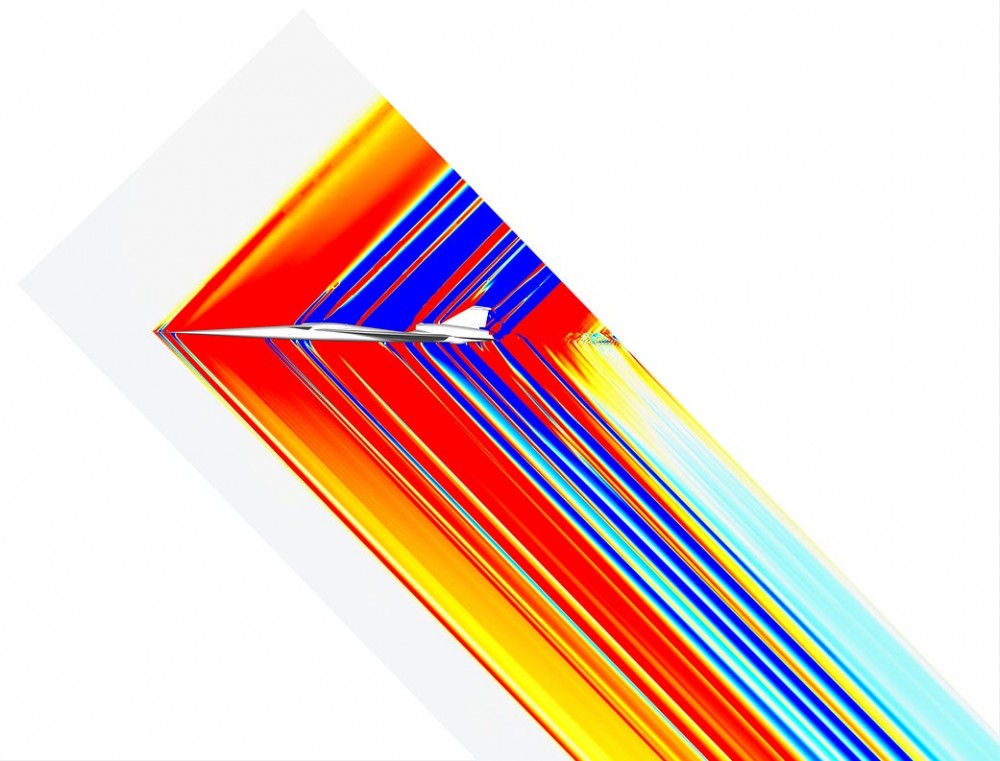
Why don’t we hear sonic booms anymore?
Supersonic flight causes those loud sonic booms for those below. That’s why the FAA banned supersonic civilian flight above the US and near its coasts. As NASA notes, this prohibition formally turned 50 years old in April 2023, and before it existed, people understandably did not like hearing sonic booms. In the 1950s and 60s, the space agency says, people in “Atlanta, Chicago, Dallas, Denver, Los Angeles, and Minneapolis, among others, all were exposed to sonic booms from military fighter jets and bombers flying overhead at high altitude.” And in 1968, one specific incident in Colorado, at the Air Force Academy, was especially destructive. The event happened on May 31, when a “fighter jet broke the sound barrier flying 50 feet over the school grounds,” NASA reports. “The sonic boom blew out 200 windows on the side of the iconic Air Force Chapel and injured a dozen people.”
Sonic booms happen thanks to shock waves forming off different features on the aircraft. For example, the canopy of a fighter jet, or the inlet for its engine, can produce them. The problem occurs because of the way those various shock waves join up, coalescing into two. “When they combine, they just get higher and higher pressure,” says Haering. The way they combine is for one shock wave to come from the front of the plane, and one from the rear. People on the ground will detect a “boom, boom,” Haering says.
Interestingly, the length of the aircraft matters in this case, affecting how far apart those booms are in time. The space shuttle, for example, measured more than 100 feet long. In that case, people would notice a “boom… boom,” Haering says. “And a very short plane, it’s booboom. And if it’s really short, and really far away, sometimes the time between those two booms [is] so short, you can’t really tell that there’s two distinct booms, so you just hear boom.”
The issue with these booms is leading NASA to develop a new experimental aircraft, along with Lockheed Martin, called the X-59. Its goal is to fly faster than the speed of sound, but in a quieter way than a typical supersonic plane would. Remarkably, instead of a canopy for the pilot to see the scene in front of them, the aviator will rely on an external vision system—a monitor on the inside that shows what’s in front of the plane. NASA said that the testing wrapped up in 2021 for this design, which helps keep the aircraft sleek. The ultimate goal is to manage any shock waves coming off that aircraft through its design. “On the X-59, from the tip of the nose to the back of the tail, everything is tailored to try to keep those shock waves separated,” Haering says.
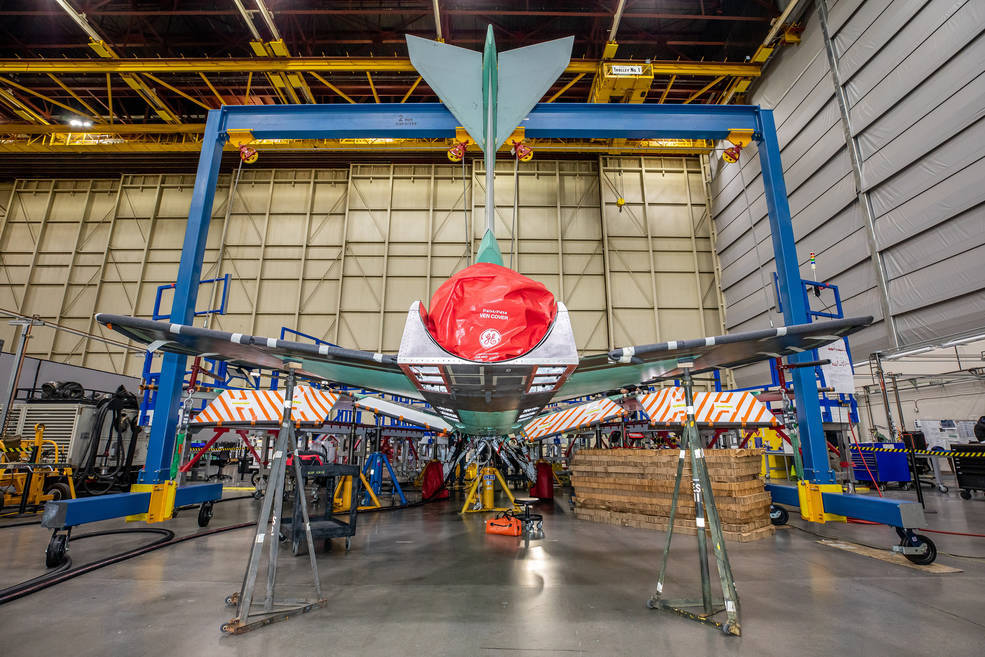
NASA says they plan to fly it this year, with the goal of seeing how much noise it makes and how people react to its sound signature. The X-59 could make a noise that’s “a lot like if your neighbor across the street slams their car door,” Haering speculates. “If you’re engaged in conversation, you probably wouldn’t even notice it.” But actual flights will be the test of that hypothesis.
The X-59 has a goal of flying at Mach 1.4, at an altitude of around 55,000 feet. Translated into miles per hour, that rate is 924 mph. Then imagine that the aircraft has a tailwind, and its ground speed could surpass 1,000 mph. (Note that winds in the atmosphere will affect a plane’s ground speed—the speed the plane is moving compared to the ground below. A tailwind will make it faster and a headwind will make it slower.)
Supersonic corridors
At Edwards Air Force Base in California, supersonic corridors permit pilots to fly at Mach 1 or faster above certain altitudes. In one corridor, the aircraft must be at 30,000 feet or higher. In another, the Black Mountain Supersonic Corridor, the aircraft can be as low as 500 feet. Remember, the speed to fly supersonic will be higher at a low altitude than it will be at high altitudes, and it will take more effort to push through the denser air.
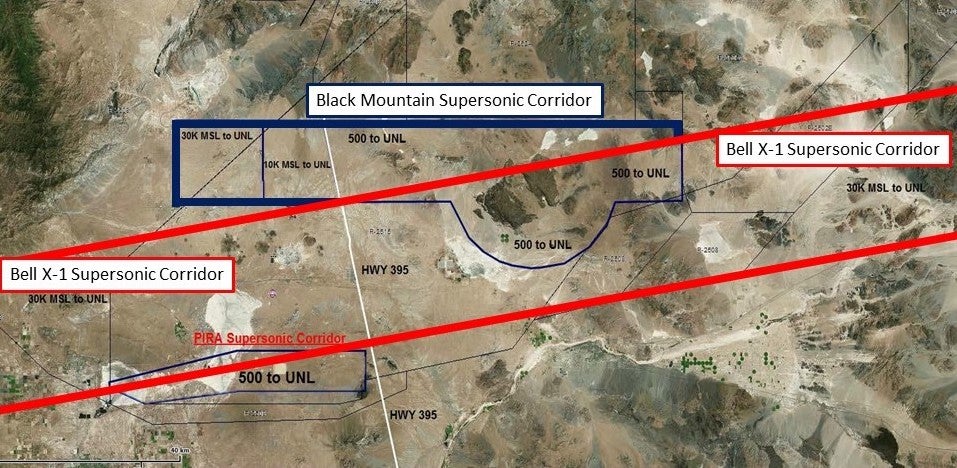
“From a flight-test perspective—so that’s what we do here at Edwards, and we’re focusing on testing the new aircraft, testing the new systems—we regularly go supersonic,” says Peterson, the flight test engineer at the US Air Force’s Test Pilot School.
The fact that one of the supersonic corridors is over the base means that sonic booms are audible there, although the aircraft has to be above 30,000 feet. “We can boom the base, and we hear it all the time,” she adds.
She notes that in a recent flight in a T-38, when she broke the sound barrier at 32,000 feet, her aircraft had a ground speed of 665 mph. But at 14,000 feet, she was supersonic at a ground speed of 734 mph.
But there’s a difference between flying at supersonic speeds in a test scenario and doing it for operational reasons. Corey Florendo, a pilot and instructor also at the US Air Force Test Pilot School, notes that he’d do it “only as often as I need to,” during a real-world mission.
“When I go supersonic, I’m using a lot of gas,” he adds.
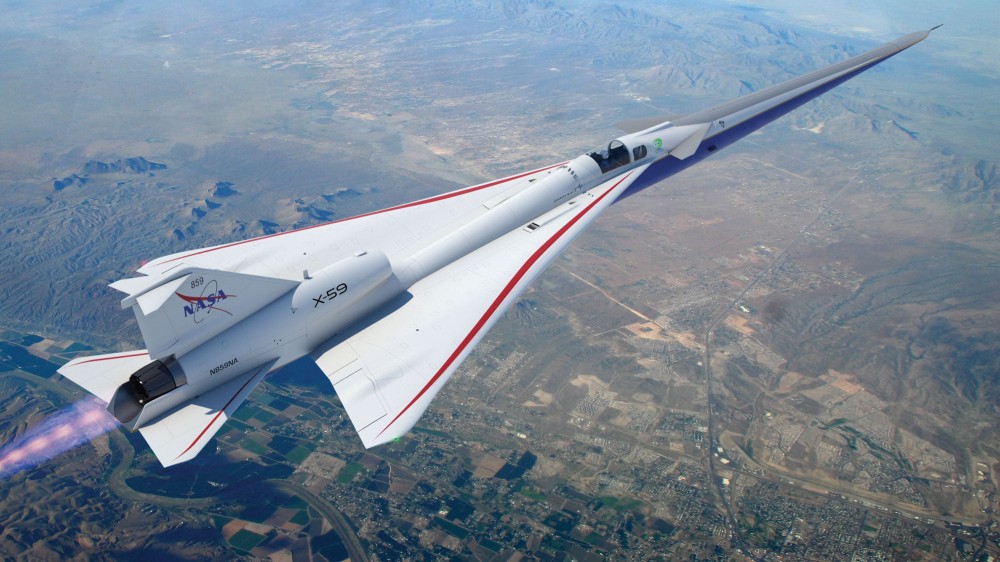
Supersonic flight thus remains available to the military in certain scenarios when they’re willing to burn the fuel, but not so for regular travelers. A Boeing 787, for example, is designed to cruise at 85 percent the speed of sound. However, one company, called Boom Supersonic, aims to bring that type of flight back for commercial travel; their aircraft, which they call Overture, could fly in tests in 2027. You may not want to hold your breath.
Joe Jewell, an associate professor at Purdue University’s School of Aeronautics and Astronautics, reflects that supersonic flight still has a “mystique” to it.
“It’s still kind of a rare and special thing because the challenges that we collectively referred to as the sound barrier still are there, physically,” Jewell says. Pressure waves still accrue in front of the aircraft as it pushes through the air. “It’s still there, just the same as it was in 1947, we just know how to deal with it now.”
In the video below, watch an F-16 overtake a T-38; both aircraft are flying at supersonic speeds, and a subtle rocking motion is the only indication that shock waves are interacting with the aircraft. Courtesy Jessica Peterson and the US Air Force Test Pilot School.










